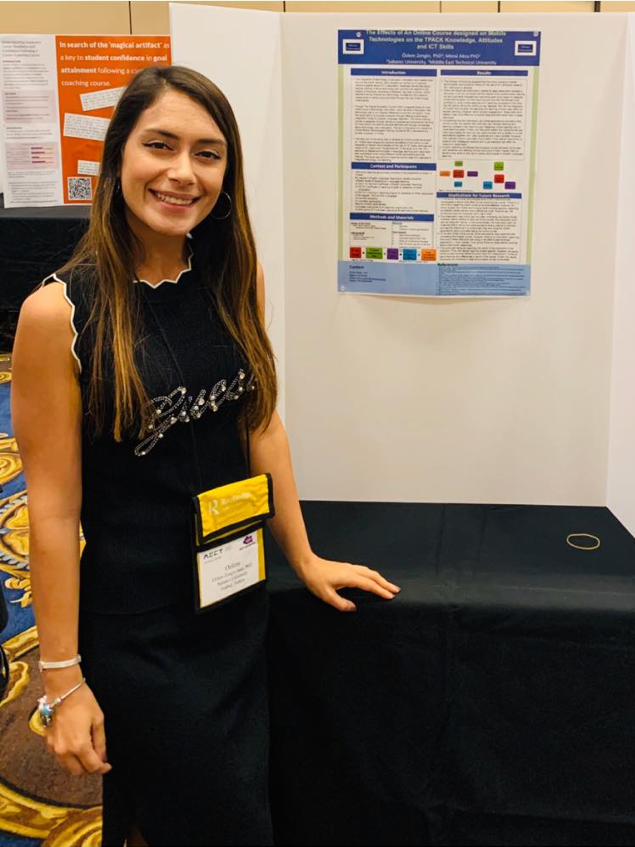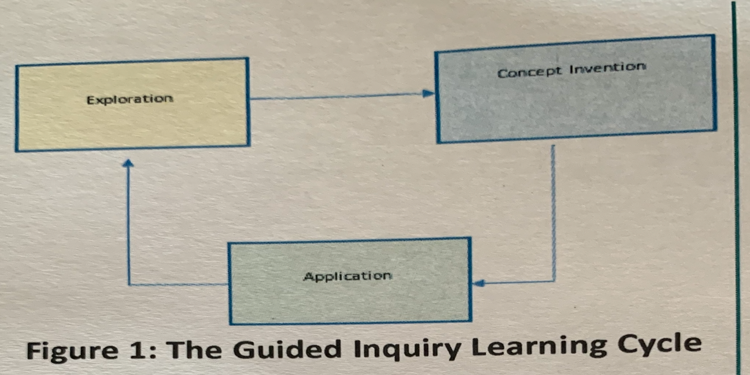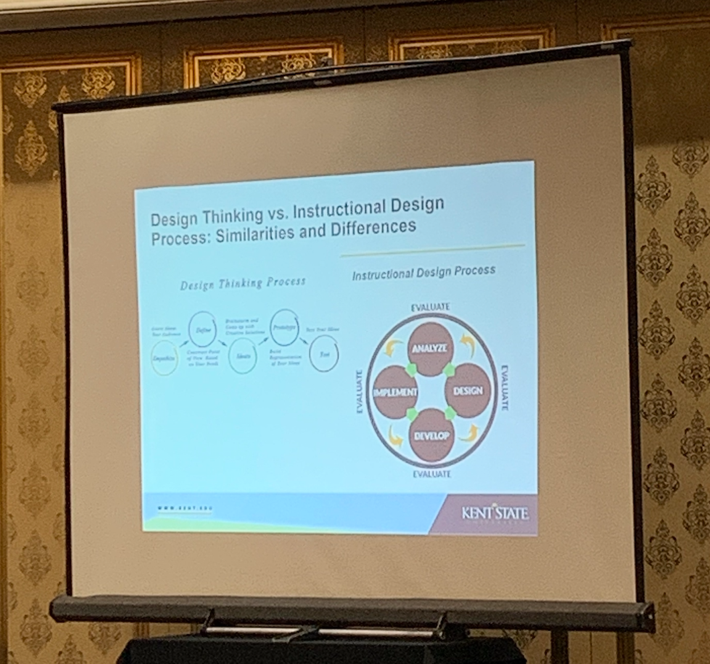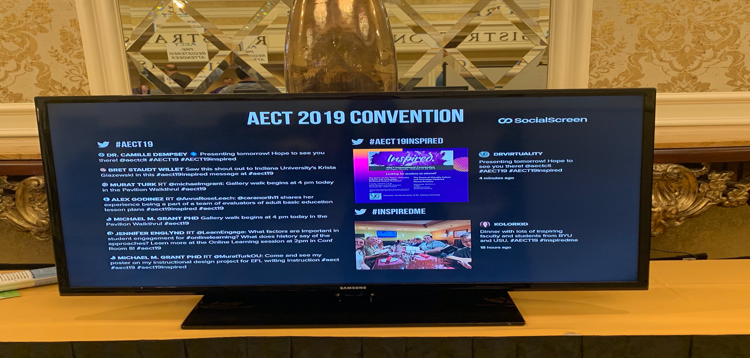
AECT: Association For Educational Communications and Technology International Convention
by Özlem İnan
Recently I have had a chance to attend the 2019 AECT International Convention: Inspired Professional Learning and Inspired Learning Professionals, which was held in Las Vegas, USA during the week of 21-25 October. Throughout the conference, I had a great opportunity to attend the sessions of different successful trainers and researchers, which was very fruitful to learn and exchange ideas related to teaching through technology more effectively.
I presented my paper on In-Service EFL instructors’ TPACK (Technological, Pedagogical and Content Knowledge) Knowledge, Attitudes, ICT Skills and Views on ICT and Mobile Technologies. The research was conducted through Mixed Methods: explanatory sequential research design and the data were analyzed through Descriptive Statistics, Wilcoxon Signed Rank Test and content analysis by coding. During the presentation, it was an exciting to get feedback and comments from researchers worldwide.
 In addition to my presentation, I had the opportunity to attend different sessions on technology integration into education. The first was one on “The Impact of Guided Inquiry Collaborative Learning on Student learning in Secure Coding. In this study, to test the effects of Guided Inquiry Collaborative Learning (GICL) activities, student-learning outcomes, learning experiences, student attitudes and motivation in an introductory information technology course were assessed. Students were given a questionnaire on demographic information and cyber security as pre and post-tests and provided with a GICL activity to be completed as teams. The results indicated that such activity increased student performance substantially and getting help from group members talking about the concepts and working on the exercises helped them achieve the tasks better.
In addition to my presentation, I had the opportunity to attend different sessions on technology integration into education. The first was one on “The Impact of Guided Inquiry Collaborative Learning on Student learning in Secure Coding. In this study, to test the effects of Guided Inquiry Collaborative Learning (GICL) activities, student-learning outcomes, learning experiences, student attitudes and motivation in an introductory information technology course were assessed. Students were given a questionnaire on demographic information and cyber security as pre and post-tests and provided with a GICL activity to be completed as teams. The results indicated that such activity increased student performance substantially and getting help from group members talking about the concepts and working on the exercises helped them achieve the tasks better.
The second presentation I attended was on “Design Thinking vs. Instructional Design Process: Similarities and Differences. It was an informative session, which was conducted through Q/A format, in which questions from the audience guided the session.
 Another presentation I had a chance to attend was on “Strategies and Tools Used Learner Centred Instruction. The purpose of the study was to better understand K-12 teachers’ learner-centred practices by examining what strategies and tools teachers are currently using to create learner-centred classrooms. This study was conducted with 125 teachers through an online questionnaire and the date gathered were analysed through the constant comparative method. The results of this study revealed that teachers are creating learner-centred classrooms in three domains which are facilitating students’ self-regulated learning through goal setting tasks, checklists and rubrics; providing authentic learning experiences through project-based learning, real-world problem solving, role-plays and field trips; facilitating collaborative learning by group projects, peer review and editing and paired assignments.
Another presentation I had a chance to attend was on “Strategies and Tools Used Learner Centred Instruction. The purpose of the study was to better understand K-12 teachers’ learner-centred practices by examining what strategies and tools teachers are currently using to create learner-centred classrooms. This study was conducted with 125 teachers through an online questionnaire and the date gathered were analysed through the constant comparative method. The results of this study revealed that teachers are creating learner-centred classrooms in three domains which are facilitating students’ self-regulated learning through goal setting tasks, checklists and rubrics; providing authentic learning experiences through project-based learning, real-world problem solving, role-plays and field trips; facilitating collaborative learning by group projects, peer review and editing and paired assignments.
The last presentation I attended was on “Faculty Members’ and Students’ perceptions of Student engagement in the Flipped Classroom Learning Environment. The aim of the study was to explore how professors and students perceive student engagement in flipped classrooms in which they are teaching or learning. The data were derived from interviews, which were analyzed through coding using Nvivo 11. The results indicated that faculty members who fully implemented the flipped learning model had positive opinions about the implementation and student engagement, which helped them to increase their performance.

